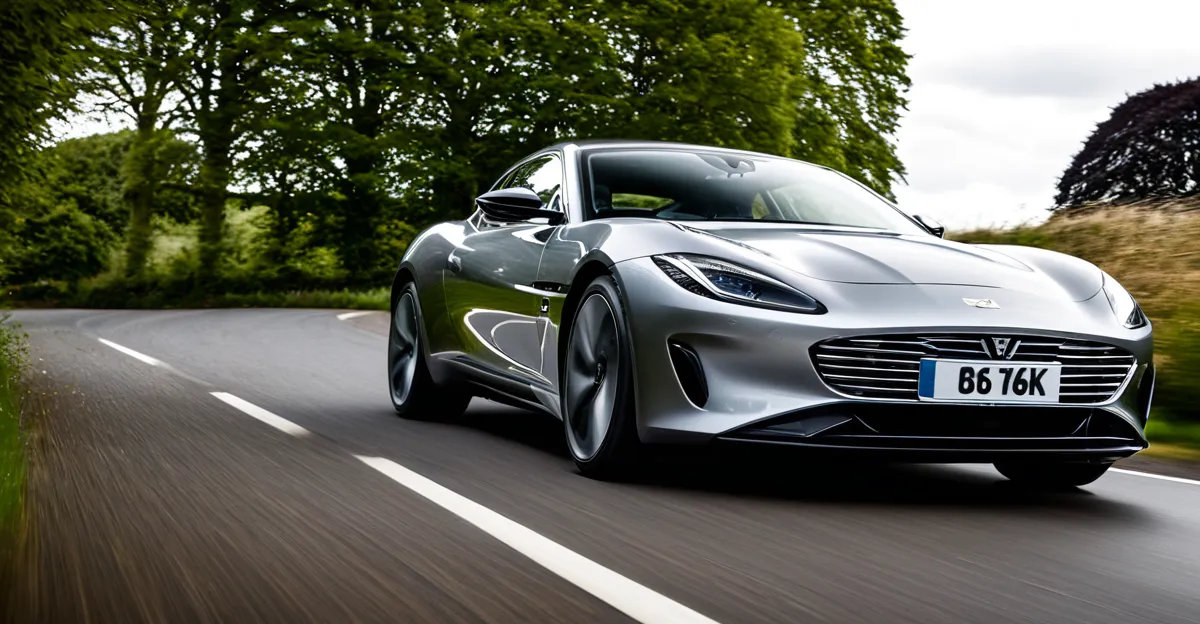Key Trends Shaping UK Automotive Design and Aesthetics
In the dynamic world of UK automotive design trends, both exterior and interior developments continually redefine vehicle appeal. Exterior designs emphasize sleek, aerodynamic shapes combined with bold contours, reflecting a shift towards more futuristic yet functional styling. Meanwhile, interiors are embracing minimalistic layouts enriched with premium materials, offering enhanced comfort and luxury.
Influential car design UK figures, such as celebrated designers and automotive studios, play a pivotal role in shaping current aesthetics. Their work often balances tradition with innovation, blending classic British elegance with cutting-edge influences. This fusion has inspired a wave of vehicles characterized by refined lines and sophisticated detailing.
Also read : What are the key AI trends influencing UK automotive marketing strategies?
Consumer preferences in the UK exhibit notable shifts as well. Buyers increasingly demand features that combine aesthetic appeal with practicality. This includes versatile interior configurations, customizable trims, and advanced ergonomic designs that cater to diverse lifestyles. The growing interest in personalization further drives innovation, encouraging manufacturers to explore unique textures and finishes that resonate with UK tastes.
Overall, the landscape of automotive aesthetics UK showcases a commitment to innovation, craftsmanship, and responsiveness to evolving market desires, ensuring that both form and function are thoughtfully integrated.
Also read : How are UK automakers responding to changing consumer preferences?
Impact of Sustainability on UK Car Design
Sustainability has become a cornerstone of eco-friendly car design UK, deeply influencing both materials and manufacturing processes. UK automotive design trends increasingly prioritize sustainable automotive materials, including bio-based plastics, recycled metals, and natural fibers, which reduce environmental impact without compromising quality or durability.
The shift towards sustainability is also visible in interiors. Automakers now incorporate recyclable and alternative materials such as vegan leather, hemp fabrics, and reclaimed wood. These choices not only enhance automotive aesthetics UK by adding unique textures and eco-conscious appeal but also respond to growing consumer demand for greener options.
Regulatory pressures in the UK further accelerate these trends. Stringent emissions and waste directives encourage manufacturers to innovate with materials and production methods that minimize carbon footprints. UK consumers, aware of environmental challenges, support brands committed to sustainable design, reinforcing the market push toward greener practices.
In essence, sustainability reshapes the landscape of car design UK by integrating responsible materials and practices that meet both ecological and aesthetic standards, making sustainability an integral part of the country’s automotive future.
Evolving Colour Palettes and Material Choices
The car colour trends UK landscape reveals a clear preference for muted tones and elegant metallics, reflecting a desire for sophistication balanced with subtlety. Shades such as deep blues, graphite greys, and pearl whites dominate exterior palettes, offering a modern yet timeless appeal that complements evolving UK automotive design trends. These colours not only enhance the aerodynamic and sleek vehicle shapes but also align with buyers’ increasing preference for understated luxury.
Interior colour schemes and materials echo this trend, often featuring neutral hues like warm greys, soft beiges, and rich blacks. This creates a calming environment focused on comfort and refinement. The use of contrasting stitch colours and matte finishes adds depth and personalization options, demonstrating how UK car interiors progress beyond mere functionality toward expressions of individual style.
Material innovation also plays a vital role. Manufacturers actively explore new textures, incorporating soft-touch plastics, woven fabrics, and sustainable alternatives like recycled textiles and vegan leathers. These choices expand the palette of tactile experiences and visual interest, boosting automotive aesthetics UK by offering customers diverse options that emphasize luxury and ethical considerations.
Customisation options have advanced significantly, with bespoke paints and textured finishes becoming more accessible. Features such as iridescent coatings, satin mattes, and tactile embossing allow brands to meet growing consumer demand for unique vehicles tailored to their personalities. This evolution affirms that innovative car design UK integrates colour and material choices harmoniously, enhancing both appeal and functionality.
Integration of Technology and User Experience
In recent UK automotive design trends, the integration of advanced automotive technology UK plays a central role in elevating both form and function. Smart car interiors increasingly feature intuitive digital interfaces that blend seamlessly with minimalist cabin aesthetics, providing users with enhanced control and connectivity without compromising on comfort.
Driver-assist systems such as adaptive cruise control and lane-keeping aid significantly influence car design UK by shaping dashboard layouts and user interaction points. These technologies require manufacturers to rethink placement and visual hierarchy, ensuring that safety features remain easily accessible yet unobtrusive. Infotainment systems now boast more responsive touchscreens, voice commands, and customizable displays tuned to user preferences, marking a clear evolution in digital design trends UK.
The UK market often leads in prioritizing personalized user experiences. Integration of technologies like gesture controls and ambient lighting responds to consumer demand for more engaging, supportive cabin environments. This approach also supports a smoother transition toward semi-autonomous driving, where design must balance technological sophistication with user trust and familiarity.
In summary, smart car interiors in the UK strategically combine cutting-edge technology with ergonomic design. This fusion enhances the driving experience while maintaining the distinctive styling expected in UK automotive design trends, affirming the country’s role at the forefront of automotive innovation.
UK Distinctiveness in Global Automotive Design
The British car design identity is a defining force that sets UK vehicles apart in the global market. This distinctiveness emerges through a dedicated fusion of heritage and innovation, where classic British elegance meets adaptive, forward-thinking styles. Unlike global automotive trends that often lean toward uniformity, car design UK emphasizes subtle sophistication paired with function, producing designs that are both culturally resonant and technologically advanced.
Leading UK brands and local automotive innovation UK significantly contribute to this unique positioning. For example, manufacturers integrate bespoke elements inspired by British craftsmanship, such as intricate detailing and refined material usage, which enrich automotive aesthetics UK with a signature blend of tradition and modernity. This local innovation includes not only design features but also the adaptation of cutting-edge technologies developed within the UK’s automotive sector, reinforcing a competitive edge that marries aesthetic heritage with contemporary demands.
Moreover, the UK’s approach often diverges from global design trends by prioritizing personalized user experience and sustainable practices within the aesthetic framework. This careful balance ensures that vehicles embody a sense of place and identity without sacrificing progress or relevance in an ever-evolving market. Through this lens, the UK continues to influence global design with its commitment to craftsmanship, innovation, and distinctive stylistic choices unique to British sensibilities.





